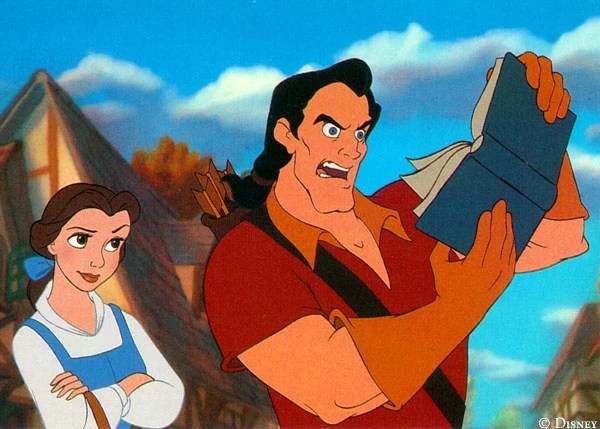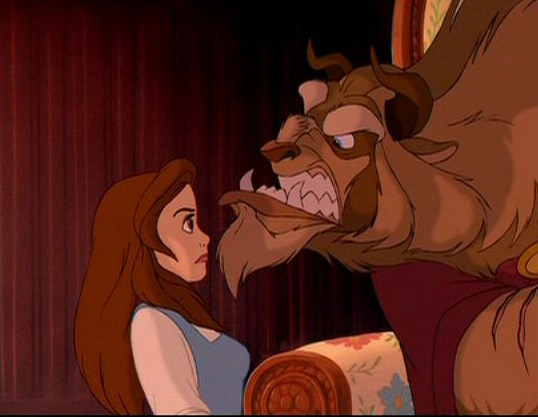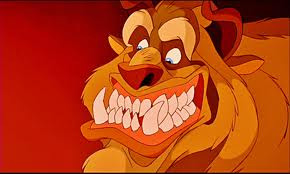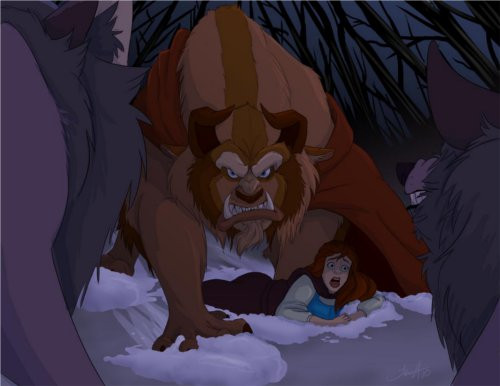Scrolling through Tumblr, the boisterous tune of Disney’s “Gaston” from Beauty and the Beast unexpectedly lodged itself in my brain. Despite not even clicking play, the insidious nature of Disney soundtracks took hold. Hours later, reluctantly dissecting the lyrics in my mind, a not-so-revolutionary thought emerged: Disney’s problematic portrayals aren’t just for girls; they deeply affect boys too.
 Gaston surrounded by books, looking confused.
Gaston surrounded by books, looking confused.
The need to articulate this arises from the extensive discussions surrounding Disney’s impact on young girls’ mindsets. The potential dangers are well-documented, even prompting defenses of certain Disney Princesses for possessing unexpected strength. However, the parallel, equally crucial conversation about the messages Disney sends to young boys is often muted. What exactly is Disney teaching our sons about being men?
Beauty and the Beast ironically opens with Gaston’s humiliation, the very catalyst for the infamous “Gaston” song. From his perspective, he simply expresses interest in a woman, Belle, and faces rejection. While his entitlement and boorish behavior are undeniable, and his rejection justified, the sting of that rejection remains a relatable human experience. Gaston’s reaction, in its raw emotion, is surprisingly genuine:
Gaston: No one says “no” to Gaston! Dismissed! Rejected! Publicly humiliated! Why, it’s more than I can bear.
LeFou: More beer?
Gaston: What for? Nothing helps. I’m disgraced.
His despair is met not with empathy, but with LeFou’s dismissive cheerleading:
LeFou: Who, you? Never! Gaston, you’ve got to pull yourself together.
The underlying message is stark: a man expressing vulnerability is unacceptable. Disney, inadvertently or not, reinforces a damaging trope. Men are not allowed to feel, to express sadness or hurt. “Man up” is the pervasive, harmful sentiment echoed even in a children’s film.
The “Gaston” song then pivots to celebrate Gaston’s “winning” attributes, all entrenched in hyper-masculine stereotypes. These are the very traits that mainstream media constantly bombards young boys with as the ideal of manhood. Consider the lyrics:
Gaston is lauded for his violence:
“Every guy here’d love to be you, Gaston, even when taking your lumps.”
His exaggerated, almost cartoonish physicality is a source of pride:
Chorus: For there’s no one as burly and brawny.
Gaston: As you see I’ve got biceps to spare.
LeFou: Not a bit of him’s scraggly or scrawny….
Gaston: That’s right! And every last inch of me’s covered with hair!
His prowess as a hunter and killer is glorified:
I use antlers in all of my decorating!
And the song even hints at a questionable, homoerotic undertone within his hyper-heterosexual persona:
In a wrestling match nobody bites like Gaston!
Gaston embodies the caricature of “a man among men.” He ticks every box society dictates for male perfection. He is “everything a man is supposed to be.” He’s “perfect–a pure paragon,” with “no man in town half as manly.” He is masculinity personified.
Yet, Gaston is the villain.
Intriguingly, Gaston shares many of these “villainous” traits with the film’s protagonist, the Beast:
The Beast also resorts to violence:
 The Beast roaring aggressively during a fight.
The Beast roaring aggressively during a fight.
He possesses an exaggeratedly masculine physique, albeit monstrous:
 The Beast smiling, showing his teeth.
The Beast smiling, showing his teeth.
The Beast, too, is a hunter and killer:
 The Beast standing over a slain animal in the snow.
The Beast standing over a slain animal in the snow.
And he also exists within a predominantly male environment, fostering similarly ambiguous relationships:
 Cogsworth, Lumiere, and the Beast in a friendly scene.
Cogsworth, Lumiere, and the Beast in a friendly scene.
The crucial distinction between them seems to be that the Beast, in a fit of rage, imprisons Belle’s father – an act that somehow doesn’t solidify his villain status. Instead, he is rewarded with Belle’s affection, ostensibly because… he owns a library? The rationale for Belle’s romantic shift towards the Beast remains murky, but it certainly isn’t because he fundamentally surpasses Gaston in character. In many ways, he mirrors Gaston’s problematic masculinity. Perhaps Disney’s subtle message to boys is that literacy is the key to female affection? But that veers into a different discussion entirely.
The core question remains: what is Disney trying to convey about masculinity? Should boys emulate Gaston, embodying toughness, defending their beliefs, and confronting threats? Or should they aspire to be like the Beast, also tough and aggressive, but with the added virtue of occasional reading and a penchant for controlling those who displease them? Is “manliness” inherently good or bad? The line Disney draws is incredibly thin, almost nonexistent. Both characters are exaggerated representations of masculinity, and crucially, neither truly respects Belle’s autonomy. Disney presents two nearly identical figures as hero and villain, differentiated only by the Beast’s success in coercing Belle into his world. A confusing, and ultimately troubling, message for young viewers.
Disney’s portrayal offers a muddled perspective on male identity, equating desirable masculinity with aggression and dominance, while punishing emotional vulnerability. It’s a far cry from promoting healthy emotional development and respect for others.
Yours heteronormatively,
M.M. Jordahl
“I’m especially good at expectorating!” -Gaston, Beauty and the Beast
actual lyric, for serious.
